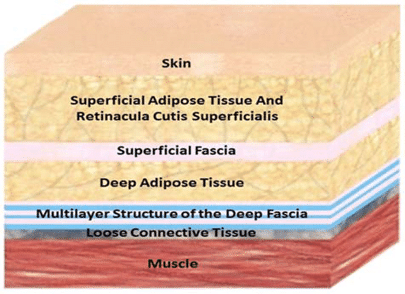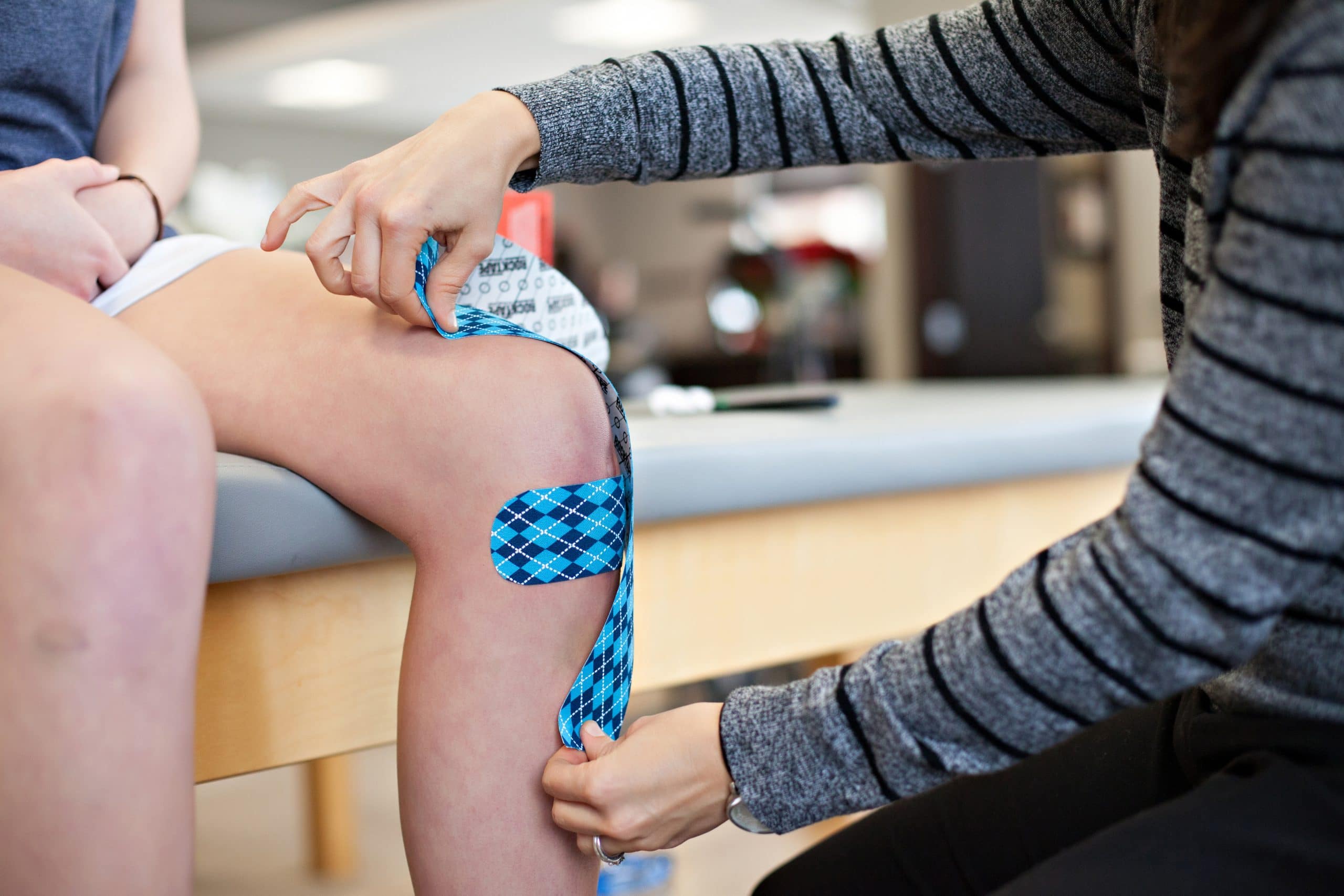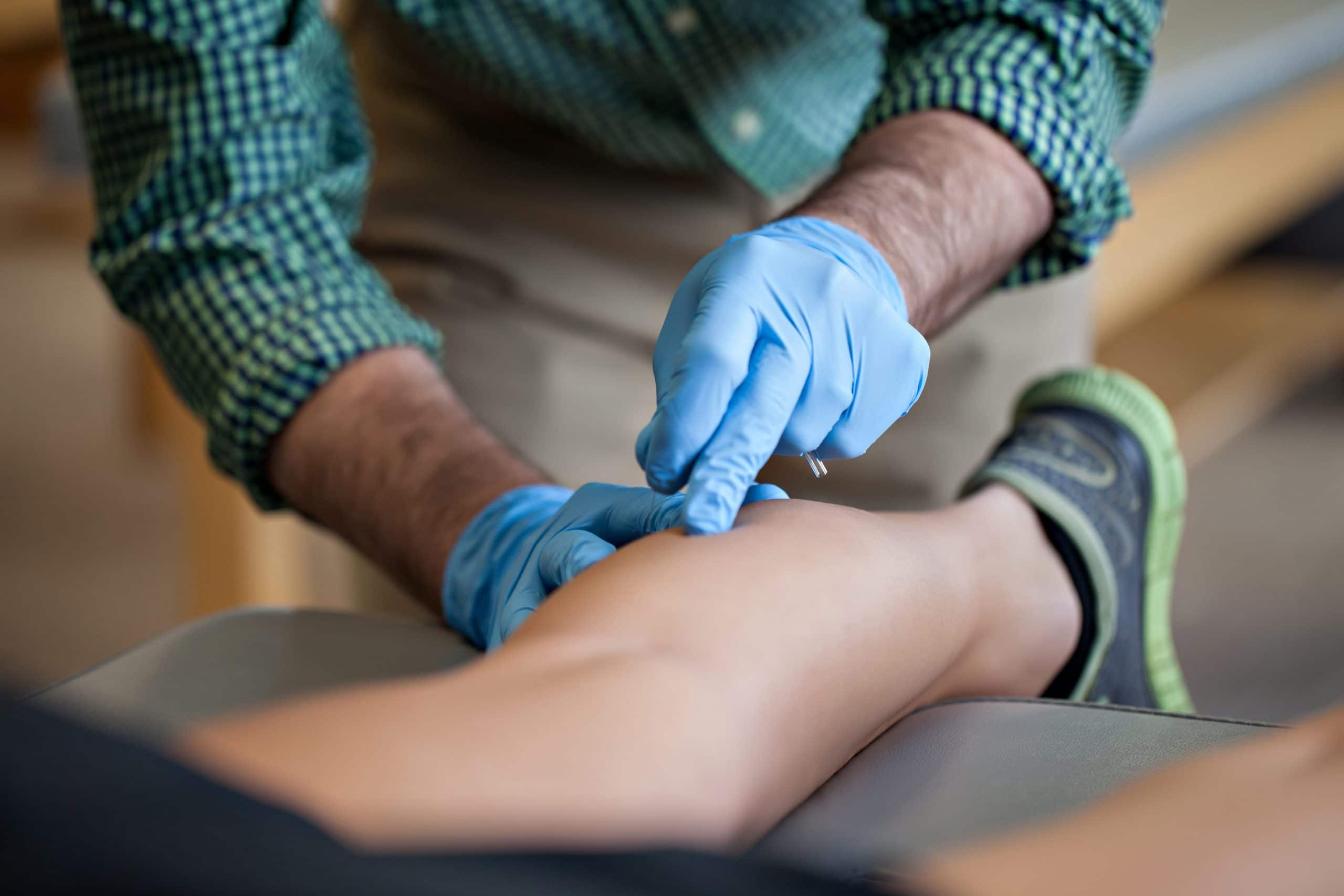Myofascial Release + How it can help YOU!
Myofascial Release: What is fascia and how can Physical Therapists help to get you moving?
First a little background on what fascia is and what it does for you.
Fascia is connective tissue that creates a link between your joints, surrounds your muscles and is integrated into your ligaments and tendons. Fascia allows you to know how your body is moving because of free nerve endings and pressure receptors within it.

Due to this high level of innervation, it is also a possible source of pain. These properties can protect us from injury when they are working properly. However, these same properties can also be responsible for abnormal movement patterns that can lead to injuries when not working properly.
When an injury occurs, these fascial layers tighten up or become fused by scar tissue causing pain and poor movement patterns. The more frequent the poor movement patterns, the more the layers tighten up, which causes the fascia to become dense. This restricts blood flow which decreases the fascia’s ability to stretch and to produce adequate muscle activation. This creates a cycle that tends to lead to persisting pain.
Now that we are on the same page about what fascia is, let’s talk about how physical therapists can help reduce pain, improve blood flow, and correct those abnormal movement patterns!
All of our physical therapists at Hulst Jepsen Physical Therapy are trained in a variety of hands on techniques to address issues with the myofascial system. This gives us several tools in our toolbox to help restore normal function.
At Hulst Jepsen Physical Therapy, we believe manual therapy is a vital part of your treatment and recovery. When we use these hands on techniques, we can affect the amount of blood flow between the layers as well as the flow of hyaluronic acid between the deep fascial layers and the muscle.
You can think of hyaluronic acid like the WD-40 of our tissues. If we can help that system function properly, your body will move through normal movement patterns and absorb the loads placed on it through your normal daily activities.
So what are some of the tools in our toolbox to effect this system? Let’s start from the surface and work our way down to the deeper tissues.
Myofascial Release: This will typically be a physical therapist using their hands to assess the tissue while asking the patient questions to get a sense of how they are responding and to determine if the tightness they are feeling corresponds to the pain the patient is reporting. With years of experience physical therapists get very good at palpating tissues for tension, temperature, and color and correlating that with patient’s complaints. In PT school while practicing our palpation skills, we would first feel a coin underneath a towel and determine by feel what it was exactly: quarter, dime, nickel and heads or tails. We do the same with tissues to determine if the tissue is elastic or firm, if the tissue has tight bands in it that feel like ropes or guitar strings, or if it feels like leather. This can tell us how chronic the issue is and how limited the flow of blood and hyaluronic acid is. Our hands are our most important tools and we will use them to check and recheck the tissues as we work on it.
Cupping: You have probably seen the pictures of Michael Phelps with large circles on his back during the Olympics. That was an aggressive form of cupping creating those circular marks where the blood was pulled toward that tissue. Olympic athletes tend to go to the extreme and want interventions to be as strong as possible. Even though there is nothing wrong with being that aggressive, we tend to be gentler with our cupping. We use cupping as a tool to lift up the shallow layers (skin and superficial fascia) to allow better movement of the deeper layers underneath. The skin will turn pink with the increased blood flow and occasionally you will get some small red marks where the layers were more bound together prior to cupping.

Kinesiotaping: There are several different brands of tape but the idea is the same for all of them. These tapes can stay on the skin for more than a day and allow the tissue below it to move more freely. It also gives your fascial system some input on how that part of your body is moving as you go about activities throughout your day. At times, a physical therapist will use tape to complement the work they did with your tissues during your PT session. This may allow you to continue a sport or activity, or just move during your day more consistently. It may also relieve some pain allowing your body to rest which is an important part of the healing process.
Graston Technique or Instrument Assisted Soft Tissue Mobilization: This technique utilizes a shaped instrument (typically metal) that can specifically target difficult myofascial adhesions or areas of dense scar tissue. Instruments are more helpful for dense scar tissue than with traditional myofascial release or cupping. These unique instruments can provide additional feedback about tissues to both the physical therapist and the patient. Like cupping, you do not need to be aggressive for it to work well but some redness is expected as part of the feedback from the instrument.
Active Release Technique: With this intervention, we help your muscles and tissues move throughout its full range of motion. We target our depth and tension to a specific structure and move that tissue from a shortened position to a lengthened position. By targeting the tension and allowing the patient to aid in the desired motion as much as possible, the tissues are more prone to relax, accept the stretch, and move through a larger total range of motion. Patients will commonly state that this technique feels like a strong stretch but it pinpoints their painful tissue specifically.
Dry Needling: This technique targets muscles that produce pain by inserting a thin solid filament needle through the skin and fascia directly into the muscle you want to treat. The advantages of dry needling over the other techniques is that it can treat parts of the myofascial system and deeper muscle layers that our hands and fingers cannot reach. We can also utilize electrical stimulation directed through the needle to relax or even to re-train that muscle to contract more effectively. This can reduce pain and create channels within those layers to improve blood flow and allow your body to move more freely.

Our physical therapists love to educate our patients about their conditions and marvel at the complexity of how our body works. We also love to share ideas with colleagues and continue to learn from each other as we strive to provide you the best care. We truly are fearfully and wonderfully made and it is a blessing to share our knowledge with everyone who trusts us with their care every day.
If you are experiencing pain or suffering from an injury, be sure to contact us at 616.827.3010 to set up a free consultation at any of our 15 locations and learn about how physical therapy can help you!
Learn More About
the Author

Joel Kits
Date
02/04/2020